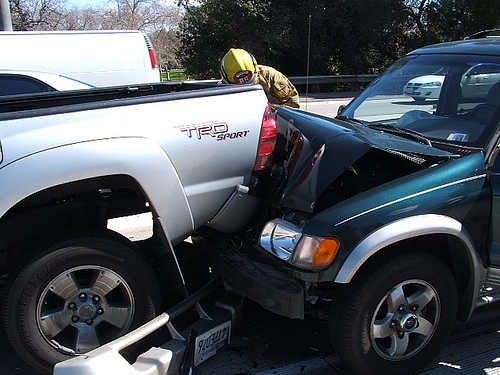Rear-end automobile collisions are one of the most common types of collisions on the road today. Understanding the rules of the road and following the procedures in place for filing insurance claims is essential for winning your case.
You may be one of the many drivers who benefit from rear-end collision, which are usually minor and very subjective.
In most cases, the driver hit will blame the driver who hit them from behind as “riding to close” or “not paying attention to the flow of traffic”. Usually these cases will favor the driver hit from behind, but in some cases, the person who hits the driver may win the claim with a good understanding of the rules of the road and following the same procedures and processes that police officers follow when determining fault. The driver who is hit may be more at fault than the driver who rear-ended them if there is specific evidence against them in the form of negligence or intent. Make sure that you use all of the resources available and obey the following steps when determining who is at fault in a rear-ending accident.
Almost Always at Fault
If you’re trailing someone and they stop abruptly, or if they stop and you’re not paying attention, you will usually always be at fault. Unfortunately, for simplification purposes, the rules of the road state that anyone who rear-ends another driver will be at fault because the road requires that you travel a safe distance away, regardless of the situation at hand. This may be unfair to the rear-ending driver, especially if the driver hit is “brake-checking” or does not stop when they’re suppose to stop, causing a domino break-slamming effect. Needless to say, police officers who see damage to the front of the culprit’s car and damage to the rear of the victim’s car will automatically place fault immediately on the rear-ending car.


Motorist slams into the back of another vehicle 2 of 3 by 7mary3, on Flickr. This work is licensed under a Creative Commons Attribution-NonCommercial-ShareAlike 4.0 International License.
Brake Lights Are Out
One defense you may have as a trailing driver who hits a proceeding car in the rear is car malfunction. If the car in front of you does not have tail-lights or swerves uncontrollably, some or most of the fault will be placed on the driver who stopped in front of you. Without proper notification and awareness, the insurance company cannot fully blame you for rear-ending a car with no brake lights or with negligence. The police officer will most likely issue a violation ticket to both you and the driver in-front of you, which will help defend your case with the insurance companies.
Multiple Car Pile Up
As a rule of thumb, the car that makes the first contact on a multiple car pileup will be the car that bears majority of the damage costs. The chain reaction that occurs during a multiple car rear-end pileup often makes it hard to distinguish fault, which is why insurance companies usually spread some of the blame across multiple drivers. If there are witnesses to the event, those eye-witness accounts may play a crucial role in the solution of the case. In addition, impact size and tire marks will show which car hit at the highest velocity, usually exposing the true culprit in the accident.
Special Cases When ACDA Rule May Be Bent
The ACDA rule stands for “Assured Clear Distance Ahead” rule, which is the rule at the foundation of rear-end collisions. The rule basically states that any accident occurring from a rear-ending incident will lay fault on the rear-ending vehicle, leaving the forward driver as a victim. An example of a case when this rule may not apply would be a case of reckless driving. If someone deliberately cuts into your lane without maintaining sufficient speed, or stops suddenly after cutting you off, you may be the victim who rear-ends the forward car. Eye-witness accounts will help your cause and help shift the blame on the forward driver. In addition, recent cases in court have developed involving a scam called “swoop and squat,” which is a deliberate scam that two vehicles place on rear-ending cars. One of the two vehicles will pull out in-front of the rearing car while the other traps the driver in their lane by driving parallel to them on the road. The forward car will then slam on their brakes, causing you to rear-end them without the ability to swerve or avoid the crash without hitting the parallel driver. People have been found doing this as a way to collect insurance money on old cars, as well as medical coverage. Be aware of this scam and make sure to inform the police officer of both drivers’ intent.
Matthew Hall is currently studying personal injury law at Levin College of Law – University of Florida. Home for the summer, he recently found himself a victim of the “swoop and squat” scam, and fully recommends attorney David Heil for any personal injury needs.
